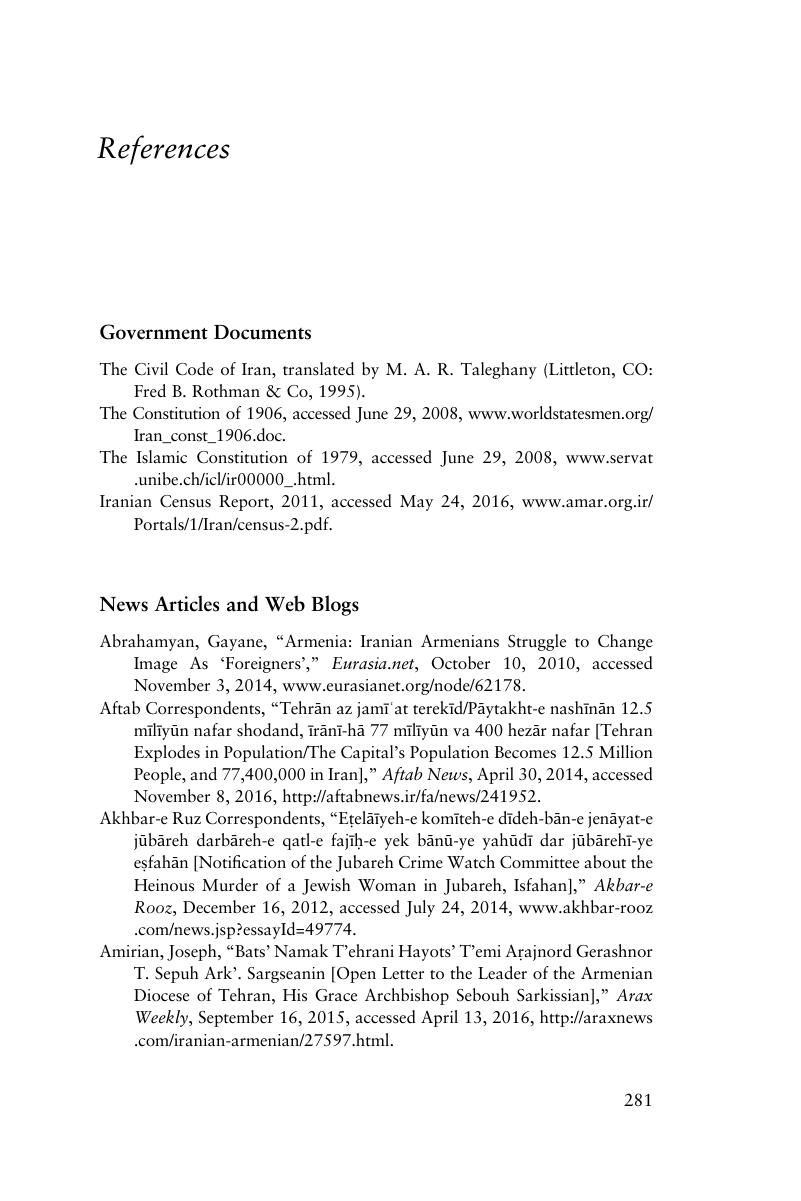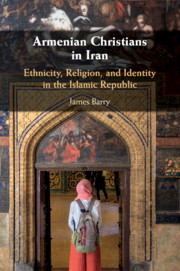Book contents
- Armenian Christians in Iran
- Armenian Christians in Iran
- Copyright page
- Contents
- Figures
- Preface
- Acknowledgements
- Note on Transliteration
- Introduction
- 1 Iranism, Islam, and Armenian-ness in Iran
- 2 Education and the Construction of Armenian Iran
- 3 Discrimination, Status, and Response
- 4 Stereotyping and Identity
- 5 Performing Armenian-ness in Tehran
- 6 Identity and Emigration
- Conclusion
- References
- Index
- References
References
Published online by Cambridge University Press: 24 September 2018
- Armenian Christians in Iran
- Armenian Christians in Iran
- Copyright page
- Contents
- Figures
- Preface
- Acknowledgements
- Note on Transliteration
- Introduction
- 1 Iranism, Islam, and Armenian-ness in Iran
- 2 Education and the Construction of Armenian Iran
- 3 Discrimination, Status, and Response
- 4 Stereotyping and Identity
- 5 Performing Armenian-ness in Tehran
- 6 Identity and Emigration
- Conclusion
- References
- Index
- References
Summary

- Type
- Chapter
- Information
- Armenian Christians in IranEthnicity, Religion, and Identity in the Islamic Republic, pp. 281 - 299Publisher: Cambridge University PressPrint publication year: 2018

